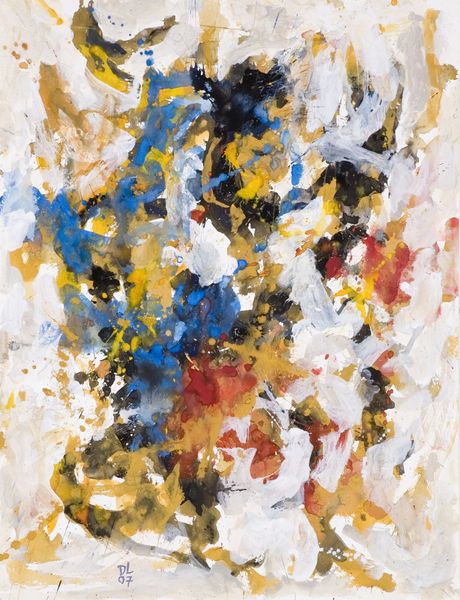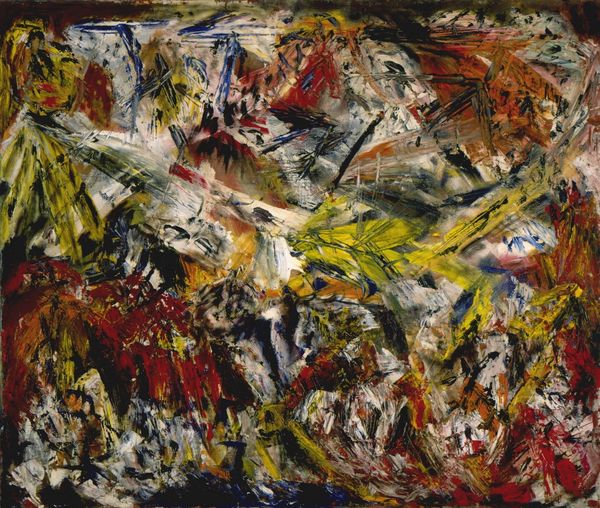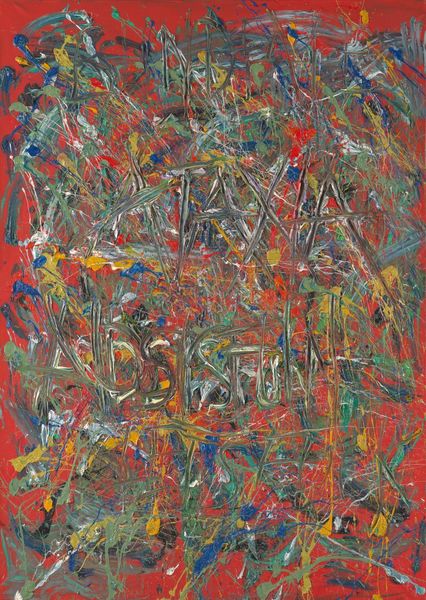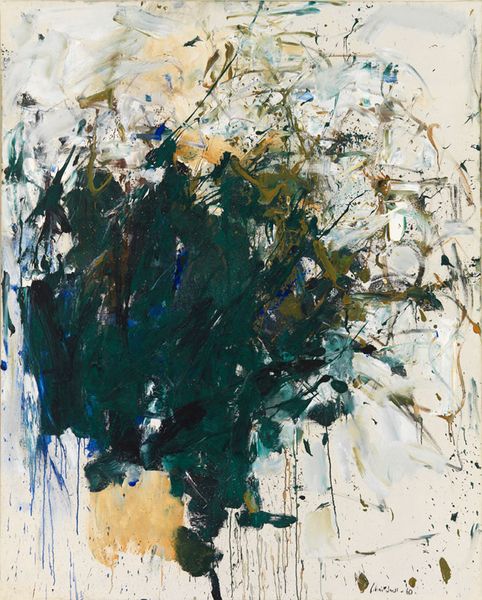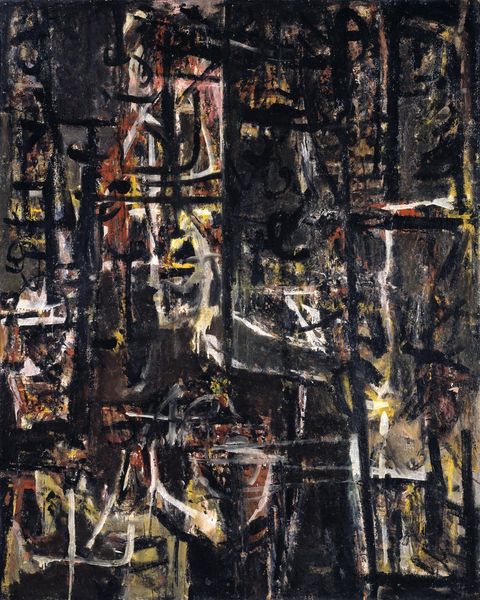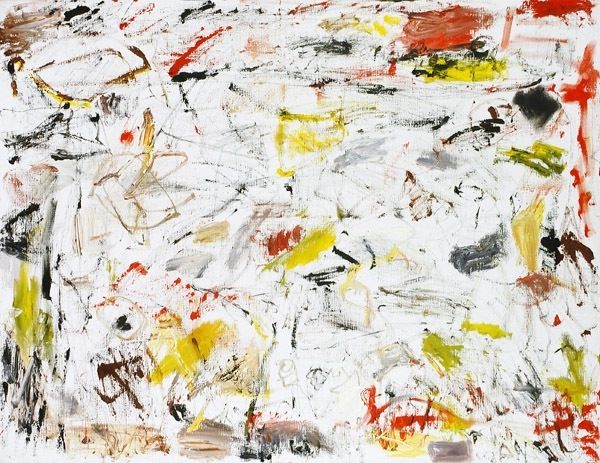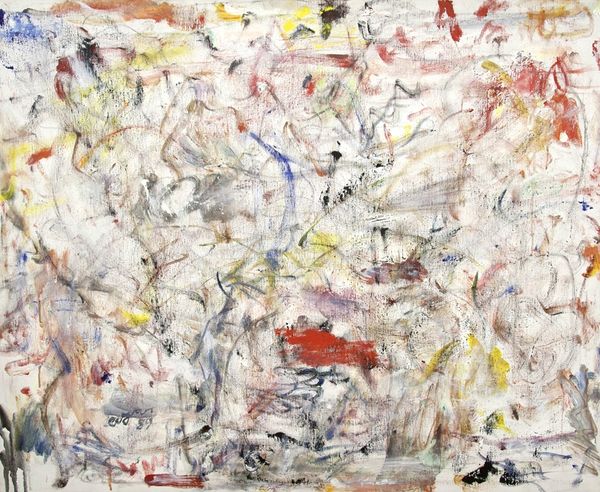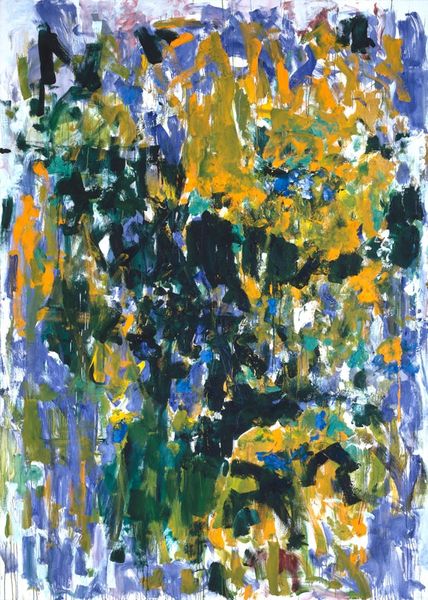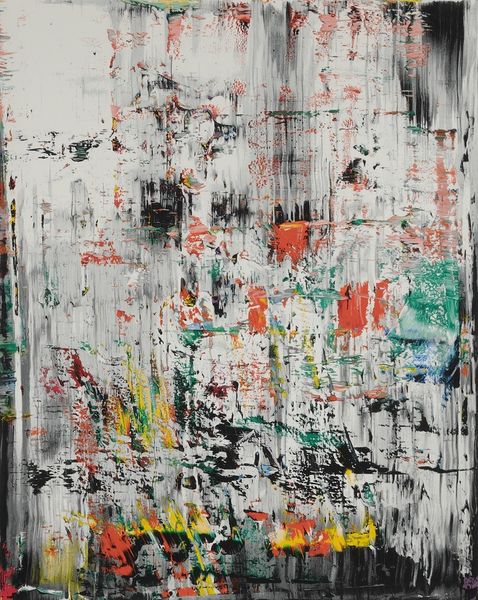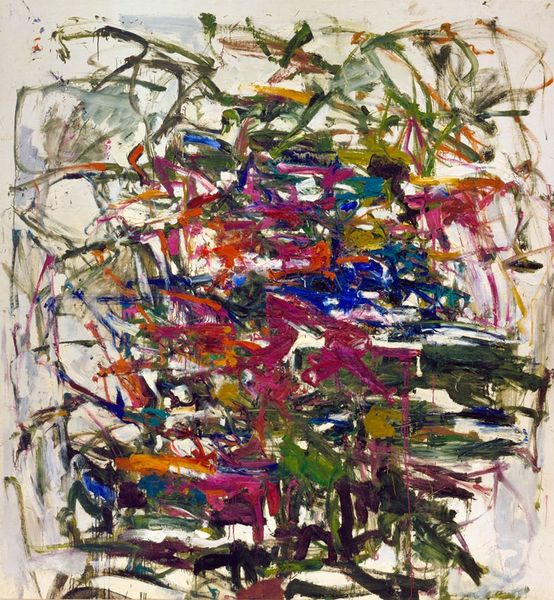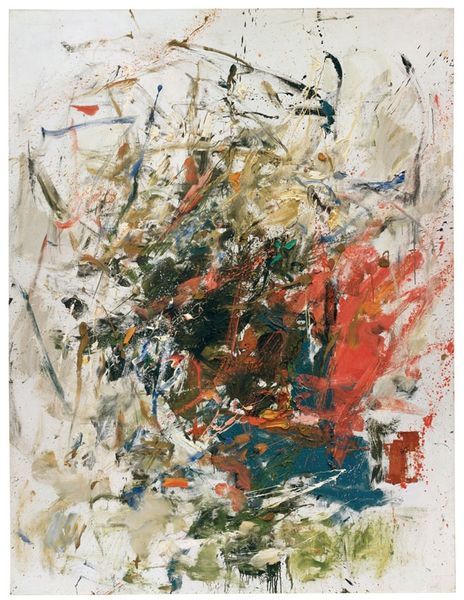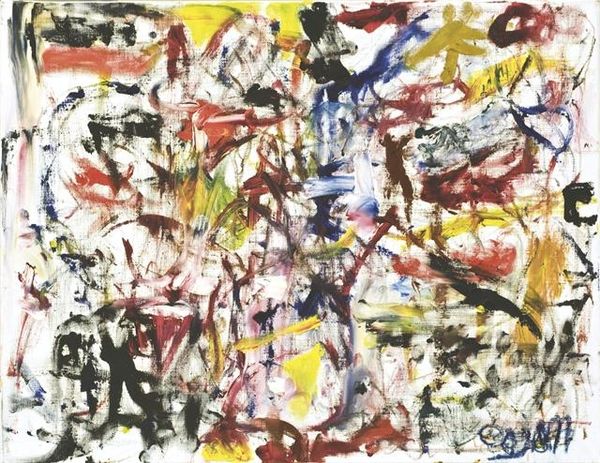
Copyright: Aurel Cojan,Fair Use
Editor: Here we have Aurel Cojan's "Feuillage d'automne," created in 1997 using acrylic paint. The brushstrokes feel so energetic and raw; it definitely captures the vibrant chaos of fall. How do you interpret this work? Curator: Immediately, the energetic strokes speak to a cultural memory of autumn. The colours—reds, yellows, browns—aren’t simply descriptive; they evoke the bittersweet feeling of change and transition that resonates so deeply in our collective consciousness. What symbolic meaning do you see arising from these abstracted forms? Editor: Well, it’s definitely non-representational, so I guess the meaning comes more from the emotional impact. Maybe the scattered leaves symbolize mortality, and the bright colors represent a final burst of life? Curator: Precisely. Autumn has often been seen as a metaphor for life’s decline, but also for its richness before winter. Think of the long tradition in vanitas paintings of using similar colors as reminders. Cojan perhaps is tapping into that, wouldn't you say? Do you sense a relationship between the technique and the feeling it invokes? Editor: Yes, definitely. The loose brushwork gives a feeling of immediacy, of being in the moment as these changes occur. It really connects with the transience of autumn. Curator: Indeed, the transience. Visual symbols in art don’t exist in isolation; they echo across time, evolving with us, gaining new dimensions of significance. And so does art affect us differently as our relationship with its symbolism deepens, correct? Editor: Absolutely. I’ll definitely be looking at abstract paintings in a different light now, paying more attention to the symbolism in color and gesture. Curator: As will I, having my personal feelings of fall reflected back at me in an entirely new light.
Comments
No comments
Be the first to comment and join the conversation on the ultimate creative platform.
